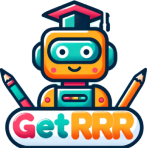Get a free exercise
Navigating AI in Education: The Importance of AI Literacy
Incorporating AI literacy into educational curricula poses significant challenges, particularly in engaging administrators, technologists, and instructors who influence its implementation.
Date of writing
March 1, 2025
Time of reading
2 minutes
The rapid rise of generative AI has ignited intense debates in academia about its integration, limitations, ethics, and roles in education and industry, as stated by NC State University. As the technology continues to evolve, scholars and institutions are emphasizing the urgent need to develop comprehensive AI literacy. According to Paul Fyfe, DELTA Faculty Fellow and Associate Professor at NC State University, AI literacy is not just for students—it’s for everyone involved in the academic enterprise, including faculty, administrators, and institutions.
The concept of literacy has continually adapted to major technological shifts. In the 1970s and 1980s, information literacy emerged in response to widespread computerization. The 1990s brought personal computing and the World Wide Web, leading to frameworks for visual, multimodal, and technological literacy. The 2010s saw the rise of data literacy alongside social media and smartphones. Now, in the 2020s, generative AI has entered the public consciousness, and AI literacy has followed suit.
Fyfe explains that these literacy frameworks share two key commitments:
AI literacy encompasses a range of knowledge and skills tailored to different educational levels. For K-12 educators, the North Carolina Department of Public Instruction offers guidelines. In higher education, Fyfe recommends the “adjustable interdisciplinary socio-technical curriculum” by Sri Yash Tadimalla and Mary Lou Maher at UNC Charlotte. Their framework outlines four pillars of AI literacy essential for students, administrators, staff, and instructors:
Incorporating AI literacy into educational curricula poses significant challenges, particularly in engaging administrators, technologists, and instructors who influence its implementation. Fyfe believes NC State can lead in AI not by chasing the latest technologies but by leveraging its human expertise and interdisciplinary strengths. Initiatives like DELTA, the Data Science and AI Academy, and the newly established Center for AI in Society and Ethics (CASE) are already paving the way. “The future of artificial intelligence relies on people and should be built upon strong AI literacy throughout our university,” Fyfe emphasizes.
The concept of literacy has continually adapted to major technological shifts. In the 1970s and 1980s, information literacy emerged in response to widespread computerization. The 1990s brought personal computing and the World Wide Web, leading to frameworks for visual, multimodal, and technological literacy. The 2010s saw the rise of data literacy alongside social media and smartphones. Now, in the 2020s, generative AI has entered the public consciousness, and AI literacy has followed suit.
Fyfe explains that these literacy frameworks share two key commitments:
- Applied Skills and Critical Understanding: Literacy isn’t just about using technology but understanding its broader social, economic, cultural, and environmental impacts.
- Interdisciplinary Nature: Like the technologies themselves, these literacies cross traditional academic boundaries, requiring collaboration to address large-scale socio-technological changes.
AI literacy encompasses a range of knowledge and skills tailored to different educational levels. For K-12 educators, the North Carolina Department of Public Instruction offers guidelines. In higher education, Fyfe recommends the “adjustable interdisciplinary socio-technical curriculum” by Sri Yash Tadimalla and Mary Lou Maher at UNC Charlotte. Their framework outlines four pillars of AI literacy essential for students, administrators, staff, and instructors:
- Understanding the Scope and Technical Dimensions of AI: This includes knowing how AI is made, by whom, and for what purposes. While AI technologies like GPTs may seem complex, their basic operations are accessible to non-experts.
- Learning to Interact with Generative AI Responsibly: Recognizing the strengths and limitations of AI is crucial. Despite its name, AI does not possess superhuman capabilities and often struggles with issues like false information, cultural biases, and monocultural thinking.
- Critically Reviewing Ethical and Socially Responsible AI: Scholars like Timnit Gebru have highlighted that big tech companies are not required to prove the safety of their AI products before release. This raises concerns about deskilling labor, energy consumption, disinformation, and the social dynamics of AI-powered communication.
- Exploring the Social and Future Implications of AI: Rather than accepting AI as inevitable, we should envision the futures we want—or want to avoid—and actively shape them through thoughtful design and policy.
Incorporating AI literacy into educational curricula poses significant challenges, particularly in engaging administrators, technologists, and instructors who influence its implementation. Fyfe believes NC State can lead in AI not by chasing the latest technologies but by leveraging its human expertise and interdisciplinary strengths. Initiatives like DELTA, the Data Science and AI Academy, and the newly established Center for AI in Society and Ethics (CASE) are already paving the way. “The future of artificial intelligence relies on people and should be built upon strong AI literacy throughout our university,” Fyfe emphasizes.

 Home
Home